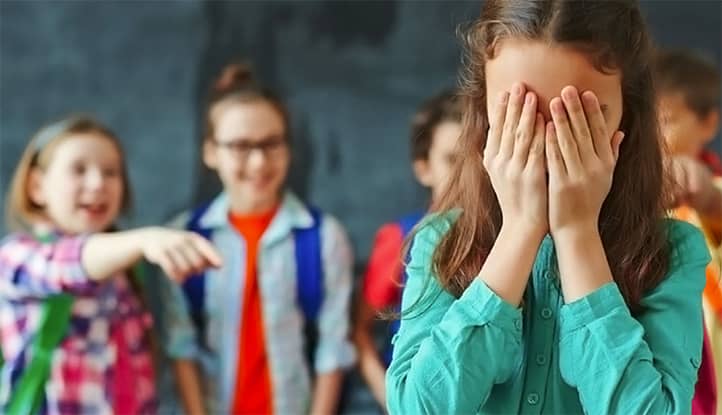School years should be a time of learning, development, and forming friendships. However, for many children, this period is overshadowed by a phenomenon known as bullying. Bullying is intentional, repetitive psychological, physical, or verbal violence aimed at humiliating, intimidating, or harming another person, usually in a group setting. It’s not just childish pranks or a temporary conflict; bullying is a serious issue that can have long-term consequences for both victims and perpetrators.
In today’s world, the issue of school bullying is becoming increasingly relevant. According to UNESCO, around a third of all adolescents worldwide are regularly bullied by their peers. This statistic is striking and highlights the need for a deeper understanding of the psychology behind this phenomenon.
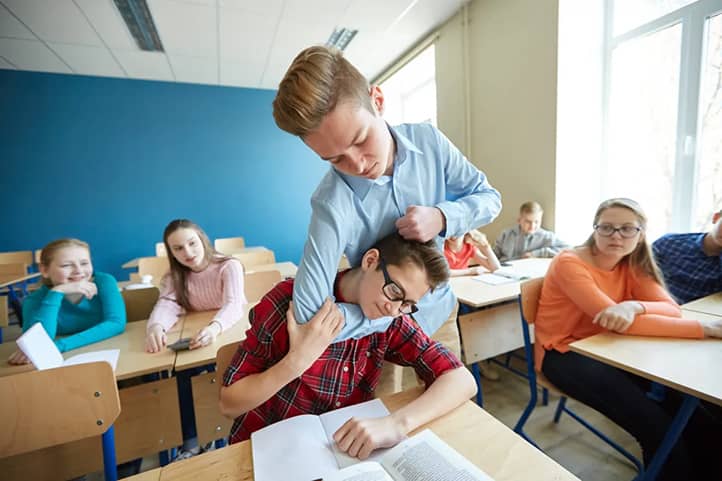
Forms of School Bullying
School hallways and playgrounds, once associated with carefree childhood, have become battlegrounds for many students. Bullying, like a chameleon, takes various forms, adapting to modern realities and technologies.
From traditional shoving in the cafeteria to sophisticated psychological manipulation, bullying has evolved, making it more challenging to detect and counteract. Bullying can be so subtle that even experienced educators may not always recognize it.
In the digital age, the boundaries of the schoolyard have blurred, and bullying has infiltrated virtual spaces. Social media and messaging apps have become a new battleground where verbal attacks and public humiliation can occur around the clock.
Understanding the diversity of bullying forms is the first step toward creating effective counter-strategies. Each type of bullying leaves its unique mark on the victim’s psyche, requiring an individualized approach to problem-solving.
Physical Bullying
Physical bullying is the most apparent form of bullying. It includes any form of physical violence, such as:
- Beatings;
- Shoving;
- Tripping;
- Damaging personal belongings.
This form of bullying often leaves visible marks, such as bruises or torn belongings, making it more noticeable to teachers and parents. However, physical bullying can also be subtler, such as when the bully intentionally brushes against the victim while passing by.
Verbal Bullying
Verbal bullying involves the use of words to inflict emotional harm. This may include:
- Insults and mockery;
- Rumor-spreading;
- Humiliations;
- Threats.
This form of bullying can be especially harmful because it affects the victim’s self-esteem and self-perception. Verbal bullying is often harder to detect as it doesn’t leave physical traces.
Social Bullying
Social bullying, also known as relational bullying, targets the victim’s social status and relationships. It may include:
- Isolating the victim from the group;
- Ignoring them;
- Manipulating friendships;
- Public humiliations.
This form of bullying is often the most sophisticated and can be particularly damaging to a child’s social development.
Cyberbullying
With the advancement of technology, a new form of bullying has emerged — cyberbullying. It occurs in the digital space and may include:
- Offensive messages on social media;
- Spreading compromising photos or videos;
- Creating fake profiles to mock the victim;
- Excluding them from online groups.
Cyberbullying is particularly dangerous because it can happen around the clock, even when the victim is at home, a place that should be safe.

Victim Psychology
Behind every case of bullying is a personal story — a story of a child whose world has suddenly turned into a battlefield. Victims of bullying often feel like actors in a play where they have been given an unwanted lead role.
Fear, loneliness, and a sense of helplessness are just the tip of the iceberg of emotions that bullying victims face daily. Deep within, a complex set of psychological reactions forms, which can impact their entire future.
Paradoxically, victims of bullying often begin to believe they somehow deserve such treatment. This toxic belief can become a self-fulfilling prophecy, leading the child to accept the victim role as part of their identity.
Understanding the psychology of the victim is not just an academic task. It is the key to developing effective support and rehabilitation strategies that can help the child not only survive bullying but also emerge from it stronger.
Common Characteristics of Bullying Victims
Bullying victims often possess certain characteristics that make them more vulnerable to harassment. These traits may include:
- Low self-esteem. Children who lack self-confidence are more likely to become targets for aggressors.
- Anxiety. High levels of anxiety can make a child more vulnerable to bullying.
- Physical weakness. Especially in cases of physical bullying, children who are physically weaker than their peers often become victims.
- Social isolation. Children with few friends or difficulties establishing social connections are more likely to be targeted.
- Differences. Any noticeable differences, whether physical features, ethnicity, sexual orientation, or special educational needs, can make a child a target for bullying.
Factors That Increase the Risk of Becoming a Target
Several factors can increase the risk of a child becoming a victim of bullying:
- Family factors. Overprotective parents may unintentionally hinder the development of social skills, making the child more vulnerable.
- Previous victimization experiences. Children who have already been victims of bullying often continue to be targets.
- Insufficient social skills. Difficulties in forming and maintaining friendships can isolate a child, making them more vulnerable.
- Academic achievements or failures. Both high and low academic performance can attract unwanted attention.
- Emotional reactivity. Children who easily show fear or distress often become appealing targets for bullies.
Psychological Consequences for Bullying Victims
Bullying can have serious and long-term psychological consequences for victims:
- Depression and anxiety. Victims of bullying are at an increased risk of developing depression and anxiety disorders.
- Low self-esteem. Constant taunting can significantly damage a child’s self-esteem.
- Academic problems. Bullying often leads to lower academic performance and reluctance to attend school.
- Social isolation. Victims may avoid social interactions, leading to further isolation.
- Post-Traumatic Stress Disorder (PTSD). In severe cases, bullying can lead to PTSD.
- Suicidal thoughts. In the most severe cases, bullying victims may consider suicide as an escape.
Coping Strategies and Survival Mechanisms
Bullying victims often develop various coping strategies and survival mechanisms:
- Avoidance. Many victims try to avoid situations where bullying might occur.
- Seeking support. Some children turn to friends, teachers, or parents for help.
- Skill development. Some victims attempt to develop social skills or physical strength to better protect themselves.
- Ignoring. Some children try to ignore bullying, hoping it will stop on its own.
- Retaliation. In some cases, victims respond with aggression, which can lead to an escalation of the conflict.
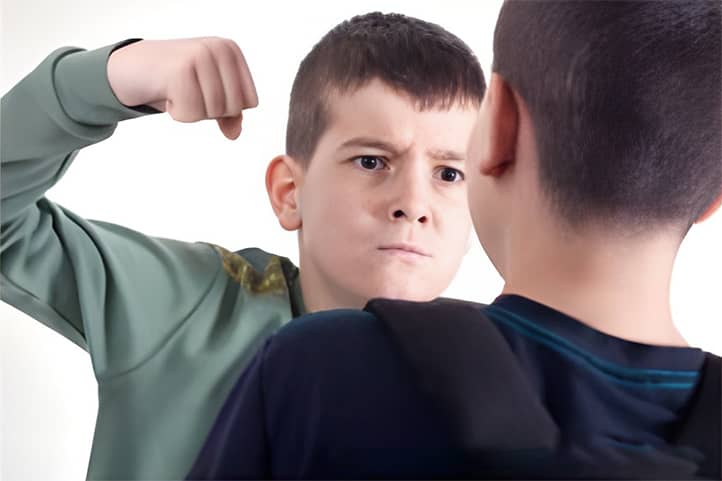
Psychology of the Aggressor
Behind the bully’s mask of cruelty often lies a complex personality with its own fears and unresolved issues. Aggression may be the only way they know to interact with a world that seems hostile and unpredictable.
The path to becoming a bully often begins long before the first act of aggression at school. Family dramas, traumatic experiences, and a lack of positive role models can all contribute to the foundation of aggressive behavior.
Ironically, bullies often suffer from low self-esteem, masking their insecurities with displays of strength and dominance. Acts of bullying provide them with a sense of control and the recognition they crave.
Understanding the psychology of the aggressor does not mean justifying their actions. On the contrary, it provides us with tools for effective intervention and behavior correction, helping to break the cycle of violence.
Types of Aggressors
Aggressors in bullying situations are not a homogeneous group. Several types can be distinguished:
- Leaders (or “primary bullies”). These are often charismatic, socially influential children who initiate bullying.
- Followers. These children actively support the leader but rarely initiate bullying on their own.
- Instigators. They may not participate directly in bullying but encourage the aggressors and create an atmosphere that fosters harassment.
- Passive aggressors. These children may not take active participation but silently support bullying with their approval.
Motivations Behind Aggressive Behavior
Understanding the motivations of aggressors is key to effective intervention. Primary motivations include:
- Need for control and power. Many aggressors feel the need to dominate others.
- Low self-esteem. Some aggressors have low self-esteem and use bullying to boost their status.
- Envy. Aggressors may envy certain qualities or achievements of the victim.
- Lack of empathy. Many aggressors struggle to understand the feelings of others.
- Personal victimization experience. Some aggressors were themselves victims of bullying and now “pass on” this behavior.
Family Background and Personal History of Aggressors
The family environment often plays a significant role in shaping the behavior of aggressors:
- Authoritarian parenting style. Children raised in families with strict control and punishment may replicate this model of behavior.
- Lack of emotional support. Aggressors often grow up in families lacking warmth and emotional connection.
- Family violence. Children who witness violence at home may see aggression as normal behavior.
- Insufficient control. A lack of clear rules and boundaries can lead to the development of aggressive behavior.
Psychological Characteristics of Bullies
Aggressors often possess specific psychological characteristics:
- Low empathy. They often don’t understand or ignore the feelings of others.
- Impulsiveness. Many aggressors struggle with impulse control.
- Need for attention. Bullying can be a way to gain desired attention from peers.
- Narcissistic traits. Some aggressors have an inflated sense of self-importance.
- Difficulty with emotional regulation. Aggressors often have trouble managing their emotions, especially anger.

The Dynamics of the Relationship Between the Victim and the Aggressor
The interaction between the victim and the aggressor resembles a complex dance, where each move of one partner influences the reaction of the other. This dynamic often goes beyond simple confrontation, transforming into an intricate psychological game.
Often, both the victim and the aggressor find themselves trapped in their roles, unable to break this cycle on their own. Sometimes a sort of bond may develop between them, akin to Stockholm syndrome, where the victim begins to justify the aggressor’s actions.
Witnesses of bullying become involuntary participants in this drama; their reactions can either escalate or reduce the conflict. The silent agreement of bystanders is often interpreted by the aggressor as approval, creating an illusion of social support.
Understanding this complex dynamic is key to developing effective intervention strategies. Only by taking into account all the nuances of interaction between participants can we break the vicious cycle of bullying and create a healthy school environment.
The Cycle of Violence
Bullying often develops in a certain cycle, which may repeat itself over and over:
- Selection of the victim. The aggressor chooses a target who appears vulnerable or “suitable” for bullying.
- Testing. The aggressor may start with minor provocations to gauge the victim’s and others’ reactions.
- Escalation. If initial actions face no resistance, the aggressor intensifies the frequency and severity of attacks.
- Systematic violence. Bullying becomes regular and predictable, often involving other children.
- Establishment of control. The aggressor achieves their goal—domination over the victim and gaining power in the group.
This cycle can repeat, especially if there is no outside intervention.
The Role of Bystanders and Their Impact
Bystanders play a critical role in the bullying dynamic. They can be divided into several categories:
- Active supporters. These children actively support the aggressor by laughing, encouraging, or even joining the bullying.
- Passive supporters. They do not actively participate but support the aggressor through their presence and silent agreement.
- Passive bystanders. These children try to stay out of the situation, avoiding involvement.
- Potential defenders. They disapprove of bullying and think about helping the victim but do not act on it for various reasons.
- Active defenders. These children actively oppose bullying, attempting to protect the victim.
The role of bystanders is extremely important, as their reaction can either strengthen or weaken the aggressor’s behavior. Research shows that when bystanders intervene, bullying often stops within 10 seconds.
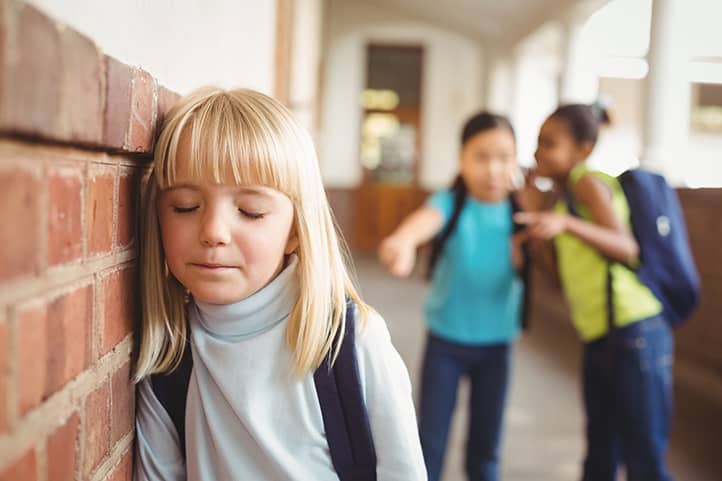
Factors Contributing to Bullying in the School Environment
The school environment is a microcosm of society, where social issues and conflicts are often reflected and even intensified. A competitive atmosphere, pressure for success, and social inequality—all these factors can catalyze bullying.
Sometimes educational practices themselves may inadvertently contribute to bullying. For example, publicly comparing students’ achievements can create an atmosphere of hostility and envy, pushing some children towards aggressive behavior.
A culture of silence and the fear of being labeled a “snitch” often hinder effective resolution of bullying issues. Students may fear reporting cases of bullying, worrying about judgment from peers or even retaliation.
School Culture and Atmosphere
Schools play a significant role in the emergence and spread of bullying:
- Competitive environment. Schools that overly focus on competition may inadvertently promote aggressive behavior.
- Insufficient intervention. If a school lacks a clear anti-bullying policy or does not respond to bullying cases, it can create an atmosphere of impunity.
- Lack of inclusivity. Schools that do not support diversity and inclusion may inadvertently create an environment where “differences” become a pretext for bullying.
- Authoritarian management style. Excessive control can lead students to seek ways to regain a sense of control through domination over others.
The Role of Teachers and Administration
The teaching staff has a significant influence on preventing and responding to bullying:
- Awareness. Teachers who fail to recognize signs of bullying may unintentionally allow it to continue.
- Response to incidents. Prompt and consistent responses to bullying incidents can significantly reduce its frequency.
- Modeling behavior. Teachers who demonstrate respect and empathy provide a positive model for students.
- School policy. Clear rules and procedures regarding bullying help create a safe environment.
Influence of Family and Society
Factors outside of school also affect the spread of bullying:
- Family patterns. Children who observe aggressive behavior at home may carry it into school.
- Media and pop culture. Violence and aggression in the media can normalize such behavior in the eyes of children.
- Social norms. Societies where aggression is considered an acceptable way of resolving conflicts may indirectly encourage bullying.
- Economic inequality. Significant socio-economic differences between students can become a source of tension and bullying.

Consequences of Bullying
The consequences of bullying go far beyond school years, leaving a deep mark on the psyche of all participants. Traumatic experiences can become a lens through which a person views the world throughout their life.
Bullying can have destructive consequences not only for victims but also for the aggressors themselves. Having become accustomed to violent methods of conflict resolution, they risk facing serious problems in adulthood.
The school community as a whole suffers from the atmosphere of fear and mistrust created by bullying. This leads to lower academic performance, an increase in absenteeism, and an overall deterioration of the psychological climate in school.
The economic consequences of bullying are often underestimated. The cost of treating psychological trauma, the loss of potential due to missed education, and reduced productivity—all of this significantly impacts society as a whole.
Short-Term and Long-Term Effects on Victims
Bullying can have serious consequences for victims, both short-term and long-term:
- Short-term effects:
- Physical injuries;
- Anxiety and depression;
- Lower academic performance;
- Social isolation;
- Appetite and sleep problems.
- Long-term effects:
- Chronic depression and anxiety disorders;
- Low self-esteem in adulthood;
- Difficulties in forming healthy relationships;
- Increased risk of suicidal behavior;
- Psychosomatic illnesses.
Impact on Aggressors
Bullying has negative consequences for the aggressors themselves:
- Legal issues. Aggressors have a higher risk of committing offenses in the future.
- Academic difficulties. Often, aggressors struggle with schoolwork and are at risk of not completing their education.
- Relationship problems. Aggressive behavior can lead to difficulties in forming healthy relationships in adulthood.
- Substance abuse. Increased risk of developing addictions.
- Mental disorders. Some aggressors may develop antisocial personality disorder.
Impact on the School Community as a Whole
Bullying affects not only the direct participants but the entire school environment:
- Atmosphere of fear. Persistent bullying creates a toxic atmosphere in the school.
- Lower academic performance. The general level of achievement can decline.
- Loss of trust. Students may lose confidence in the school’s ability to ensure their safety.
- Normalization of violence. Regular bullying can lead to the perception of aggression as a norm.
- Emotional burnout. Teachers and administration may experience stress and burnout from the constant need to resolve conflicts.
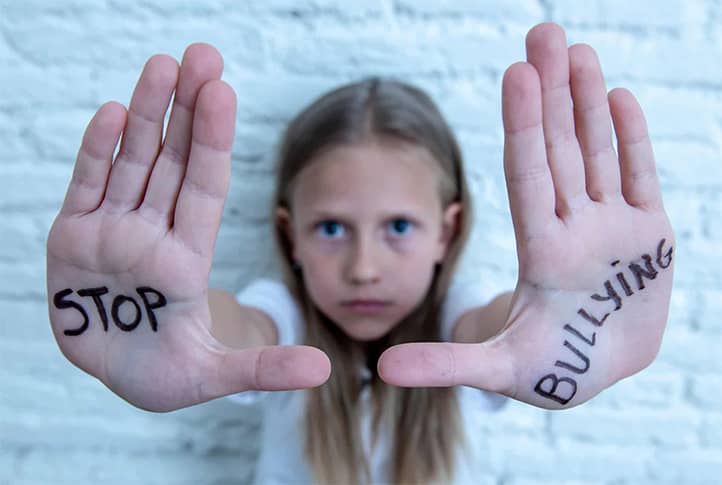
Prevention and Intervention Strategies
Effective combat against bullying requires a comprehensive approach that considers all aspects of this complex phenomenon. From school policies to individual work with students—every element of the strategy should be carefully planned and coordinated.
Innovative technologies open up new opportunities for identifying and preventing bullying. From special apps for anonymous reporting of bullying cases to artificial intelligence systems capable of analyzing student behavior, technology can be a powerful tool in the hands of educators.
A culture of empathy and mutual respect cannot be imposed from above; it must organically form within the school community. Mentorship programs, social service projects, and joint creative initiatives—all of this can contribute to an atmosphere of cooperation and understanding.
Fighting bullying is a marathon, not a sprint. Prevention and intervention strategies must be flexible, capable of adapting to new challenges and changes in the school environment. Continuous monitoring, effectiveness evaluation, and readiness to adjust are key elements of a successful anti-bullying program.
Anti-Bullying Programs
Effective anti-bullying programs usually include the following components:
- Comprehensive approach. Involvement of the entire school community—students, teachers, administration, and parents.
- Clear policy. Development and implementation of clear rules regarding bullying.
- Staff training. Regular training for teachers and staff on recognizing and responding to bullying.
- Student education. Programs aimed at raising student awareness about bullying and its consequences.
- Encouragement of positive behavior. Programs promoting empathy, mutual respect, and prosocial behavior.
- Monitoring and evaluation. Regular data collection to assess the effectiveness of programs and make adjustments.
The Role of School Psychologists and Counselors
School psychologists and counselors play a key role in the fight against bullying:
- Individual work. Providing support to both victims and aggressors.
- Group therapy. Conducting group sessions to develop social skills and empathy.
- Teacher consultation. Offering recommendations on handling bullying cases.
- Parental guidance. Advising parents on supporting children who have been bullied or correcting aggressor behavior.
- Program development. Involvement in the development and implementation of school anti-bullying programs.
Teaching Empathy and Social Skills
Developing empathy and social skills is essential in preventing bullying:
- Social-emotional learning programs. Implementing lessons aimed at developing emotional intelligence and social skills.
- Role-playing games. Using scenarios to practice empathic behavior and conflict resolution.
- Mentorship programs. Engaging senior students in mentoring younger ones to create positive behavior models.
- Collaboration projects. Organizing group projects that require cooperation and mutual assistance.
- Mediation training. Preparing student mediators to help resolve conflicts between peers.
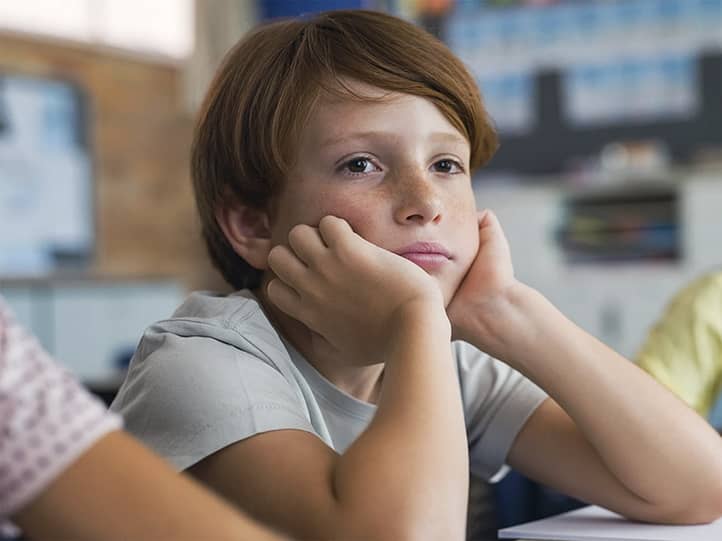
Conclusions
Bullying at school is a complex issue that requires a comprehensive approach to solve. Understanding the psychology of the victim and the bully is key to developing effective prevention and intervention strategies.
It is important to remember that bullying is not just “part of growing up” or “normal behavior for children.” It is a serious problem that can have long-term negative consequences for all parties involved.
Creating a safe and inclusive school environment requires the efforts of the entire community – teachers, administrators, parents, and the students themselves. Implementing programs aimed at developing empathy, social skills, and positive behavior can significantly reduce the level of school bullying.
Everyone has the right to a safe and supportive environment for learning and development. Combating bullying is not only the responsibility of the school, but also of society as a whole. Only by working together can we create an environment in which every child feels safe, respected, and valued.
